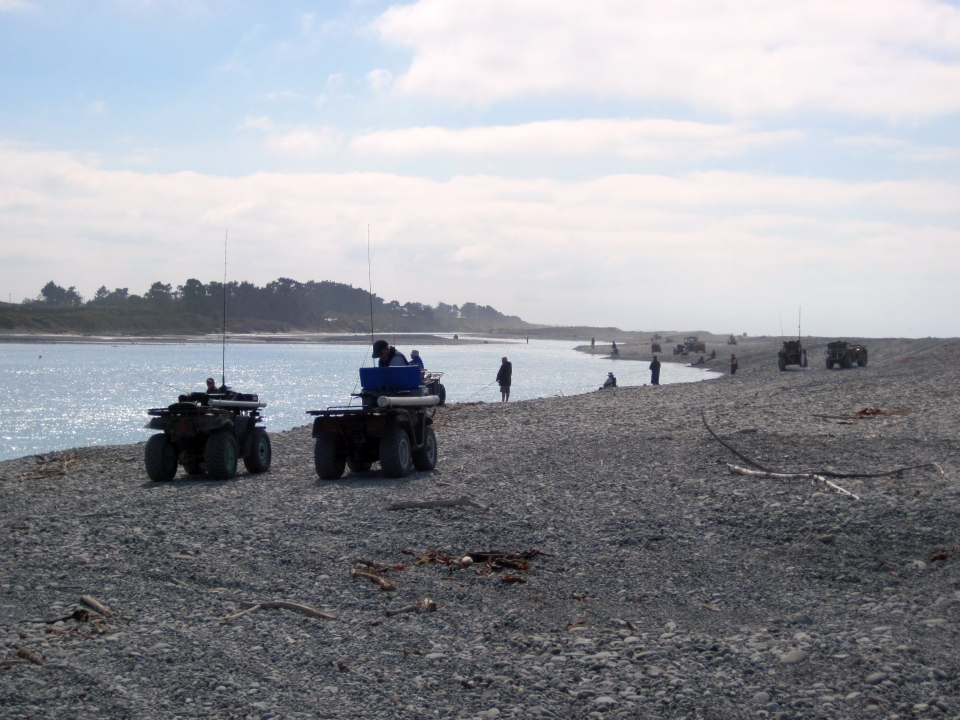Economic benefits
Agriculture production is a key part of New Zealand’s economy. But it’s not just about farmers making money. There is a flow-on economic effect which means the benefits are passed onto the wider community. And it’s not just rural towns, but also larger urban centres that benefit.

Agriculture directly employs more than 110,000 people. There are also many people employed through food, fibre and drink processing and research activities, which agriculture supports.
Irrigation allows for a wider range of crops. This benefits other businesses such as processing facilities, food manufacturers and farmers markets. It creates opportunities to add value around this wider range of produce.
Irrigation improves the quality of produce. It also helps maintain a steady supply of produce. Typically a farm producing grain crops like wheat and oats which installs irrigation will double its crop production. These are benefits to both the grower and consumer.
Many food producers who supply food to supermarkets will only do business with farms who use irrigation. This is because irrigated farms can guarantee food supply even if there is a drought.
- Watch this video about how important irrigation is in the developing world and in drier climates - https://www.youtube.com/watch?v=JJBpeVDAR5w
Environment
How a reliable water supply helps
Irrigation provides many environmental benefits. These benefits can only be achieved with a reliable water supply. Efficient irrigation needs on-demand water – much the same as a town’s water supply. This allows irrigators to apply water when a crop needs it, while maximising rainfall. This irrigation strategy reduces the amount of water a farmer will need to take.
Poorly managed irrigation can have some negative effects on the environment. How and when water is applied needs to be carefully managed by farmers. For example, if soil becomes very dry topsoil it can be prone to erosion. This is bad for the environment as it results in soil, and often fertiliser, ending up in our rivers. Irrigation helps keep soil moist so it stays in place. But if there is too much irrigation or rainfall, fertilisers can end up in rivers or groundwater. This is a problem for farmers who use irrigation and for farmers who farm without irrigation.
Studies on New Zealand crop farms showed that if irrigators apply small amounts of water at the right time, these farms leach less fertiliser into groundwater. Irrigating farmers have better control of the amount of water that is applied. Irrigated land also produces around twice the amount of crops than the same area of non-irrigated land. So when we think about the environmental impacts of using irrigation, we need to also think about the impacts of using twice the amount of land to grow the same amount of food. These impacts include things like how much fuel it would take to farm that land and how much fertiliser it would need.
Irrigators could also be used in different ways in the future. Fertiliser is usually spread as granules using trucks. A trial is underway in New Zealand to see if mixing fertiliser with water and applying it through irrigators is better for the environment. In some American states scientists have encouraged farmers to apply fertiliser through centre pivot irrigators. This allows fertiliser to be applied in smaller quantities which enables crops to better absorb it. It also means less fertiliser is lost into groundwater and washed into rivers.
Helping rivers
Taking too much water from rivers when they have low flows can mean there isn’t enough water to support fish and ecosystems. In New Zealand rules are in place to manage this. Councils set minimum flow levels for rivers. If river levels get low then irrigators and other water users – like power companies who take water for hydro power generation – must stop using water.
Some modern irrigation schemes have been developed to solve historic river and stream flow issues. The Opuha Dam in South Canterbury was designed so the Opihi River did not run dry. The Opihi is now one of the best recreational fishing grounds in New Zealand. The dam can release water into the river like a natural flood. This helps stop the build-up of algae in the river during summer.
Central Plains Water in Selwyn is another example. It has been designed to replace groundwater takes with an abundant alpine river water supply. This is helpful as there is more demand for groundwater than there is groundwater available in Selwyn district. Some rivers like the Selwyn River are also fed by groundwater so improving groundwater levels will help these rivers to flow more often.
Environmental grants and scholarships are available through a growing number of irrigation schemes. These can be used for communities to restore native vegetation and enhance local rivers. Other schemes have their own environmental restoration projects such as the Morven-Glenavy-Ikawai Irrigation company’s Waikakahi Stream project in South Canterbury.
Community
Many New Zealand towns and cities benefit from irrigation development. Greater agricultural production means more people and jobs in rural communities. School rolls in these rural areas are also increasing. More people in a community allows funding of more public facilities.
A number of towns also have their drinking water supplied from irrigation schemes – Timaru, Oamaru and Kerikeri are some examples of this.

Other benefits that irrigation schemes can provide communities include providing stock water, and the provision of water for rural firefighting purposes.
Recreation
Many popular waterways have been changed to help farming and energy production. Increasingly, irrigation system designs are including recreational interests. Community groups have also seen how irrigation canals and storage ponds can help with fundraising and thrill-seeking activities. The challenge is ensuring that waterway users can safely continue their recreation without getting in the way of important irrigation flows.

- Ready for a quiz? Try the An Asset for New Zealand activity.








